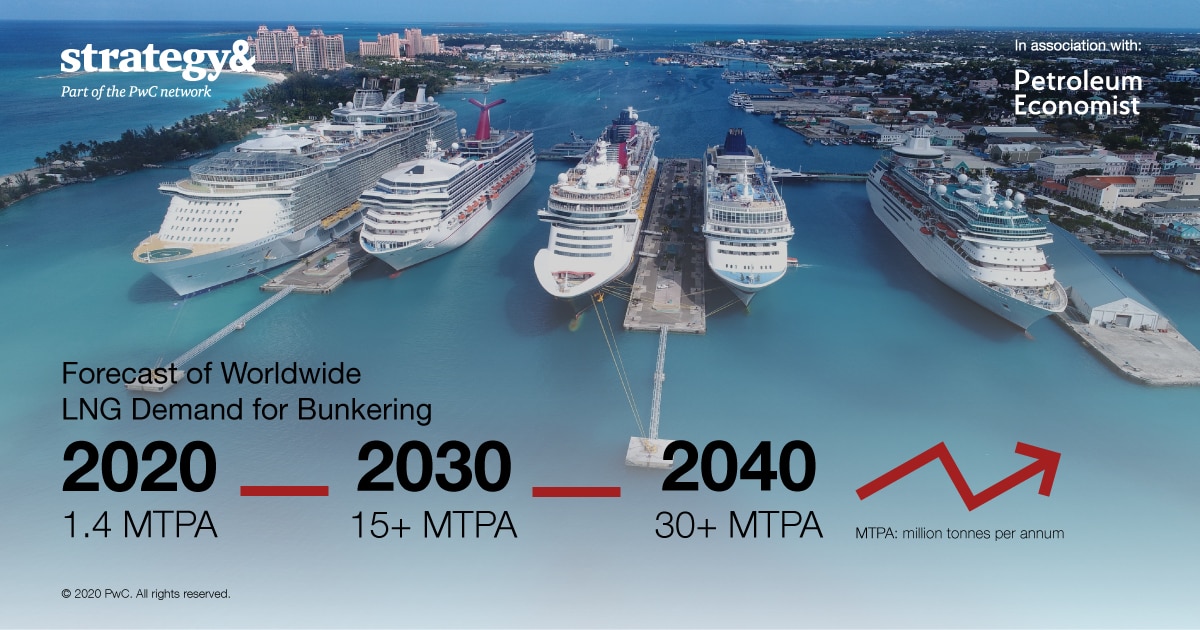{{item.title}}
{{item.text}}

{{item.text}}
As predicted in our earlier research, LNG has grown to become an established technology in most advanced economies. Global nominal liquefaction capacity grew more than 40% since 2015 to reach 430 MTPA in 2019. In this follow-up paper, in association with the Petroleum Economist, we focus on a segment that boasts significant growth opportunities in the near term: LNG for bunkering (or more simply put fuel for shipping).
In the maritime sector, pollution and specifically carbon emissions are a major concern. LNG complies with the increasingly stringent regulatory environment and is currently the most environmentally sustainable solution for newbuild ships as we strive for a greener future. From a shipowner’s standpoint, LNG offers an immediate reduction in pollution enhancing a company’s corporate social responsibility (CSR) credentials while delivering economic benefits. For LNG suppliers, small-scale infrastructure allows for the scalability of investment and the flexibility to meet green demand in different markets, such as road transport and off-grid industrial power.
The main beneficiaries of this technology will be point-to-point vessels, such as cruise ships, passenger ferries and container ships. For these segments, LNG as a fuel source is estimated to represent up to 25% of the current orderbook for global newbuild vessels. The outlook for LNG bunkering however, does still have some potential challenges. Availability of alternative conventional fuels (such as fuel oil), unexpected regulatory developments and access to capital may undermine LNG’s potential in this area.
{{item.text}}

{{item.text}}


